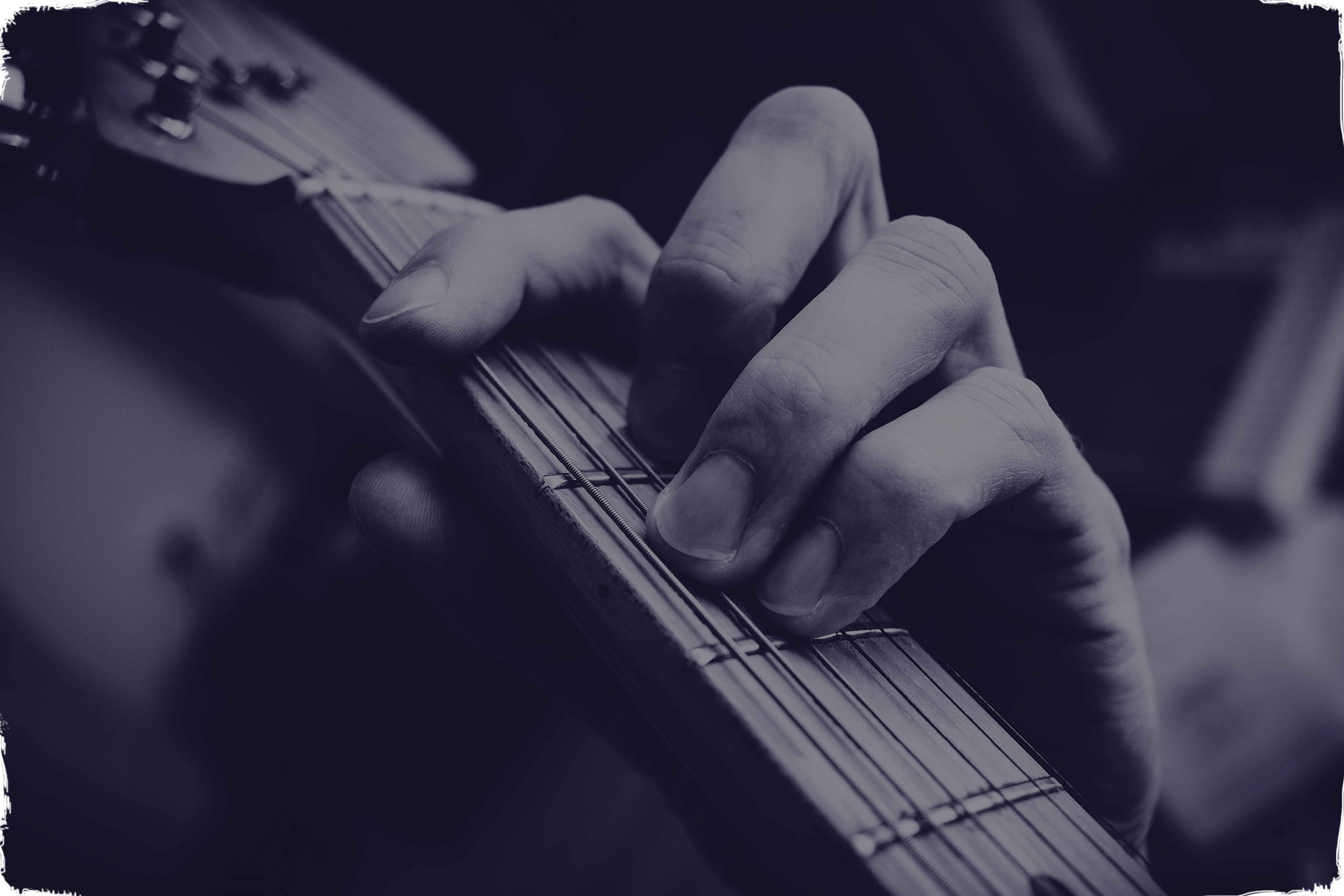So you want to know how to write music?
Well here are some pointers...

How to write music
1
It's all about making decisions
When learning how to write music, there is something that needs to be understood. It’s an idea that simplifies the process.
Understand that songwriting is essentially decision making.
Every note or chord you play there is a voice within your head telling you if you like that sound or not. You are deciding if there is a more pleasing route to take or not. Trust that inner voice. Start from a first chord, find the next chord that pleases your ear and so on.
Looking at it as a process of decision making you find your self writing the best song you can.
Does this chord sound good after this one? Yes, great onto the next chord. No? Okay let's find one that works.
You have listened to enough music throughout your life to know what you like and don’t like to hear. The decisions that we make as we go along are completely personal to our own ears and sense of style, that’s why there are so many different types of music out there.
So make choices as you go according to what you ear likes.
How to write music
2
Work out a song structure
You don’t have to map out an entire song structure before you’ve even found your chords. But having an idea of how long your verse's will be or when and where your choruses come in can help you find the right chords to play.
If you know your verse needs to sound different from your chorus then take time to understand the mood that your verse chords have set.
Progress that mood or feeling by changing up the chords or even one of the chords in the chorus.
This is common, It breaks up the monotony of a song and keeps the listener intrigued. Having said that, it's not mandatory to change the chords from verse to chorus. Sometimes it just needs a change in melody.
But switching up the chords in the chorus it can feel like “coming home” when you slip back into your more familiar verse chord structure. Bridges can be another great alternative when breaking up the continuity of a chord structure.
Check out this page on how to write a chorus if you are looking to learn more about choruses.
How to write music
3
Understand your chords and their functions
Major and minor chords serve different functions. They portray different feelings. Major chords sound bright and happy. Minor chords, sound dark and mysterious.
Be aware of which you play when. Chord theory is a critical part of understanding how all these weird and wonderful sounds react to one another.
Start to get a feel for this by playing around with your majors and minors. You can begin to develop a direction and feeling for a song by mixing the two. It goes back to the first point. Make a decision. Is this chord progression sounding too happy? Is it sounding too sad? Is it just right?
If you are looking to know more about the theory behind this then check out this page, major and minor key.
It is also important to have an understanding of chord progressions and how they work.

How to write music
4
Take note of How many chords you place in a song
Quite obviously the more chords in your progression the more complicated the music sounds. That's not necessarily a good thing. Sometimes a very simple chord progression works like a charm.
A four-chord structure is the most common. But some songs with fewer chords have become extremely famous. So don’t think to sound advanced the chords need to be complicated.
For example:
Creedence Clearwater Revivals “Bad moon rising” has only three chords. D, A, G
Bruce Springsteen's “Born in the USA” only has two chords. B, E
Dodies “Secret for the Mad” has only one note played continuously on the piano. Through her use of melody in her voice and harmony, she creates a whole symphony around one B note. That's pretty simple and stunning.
Resist the urge to complicate things when it's not appropriate. Sometimes less is more.
How to write music
5
Once you stumble upon something good go with it
Unless you know exactly what progression you want to use, some times a set of chords can slip right out of you. If they evoke a feeling within yourself then go with them.
Even if it doesn’t necessarily fit the emotion that you first set out to write about. There is nothing wrong with putting an emotional spin on happy chords and putting joyous themes over minor chords.
Get the chords written down so you don’t forget them and play it over and over again. Your ear may pick up subtle problems with the structure. In which case find a new chord that works in another place. Otherwise, you may have the perfect chords for your new song.
Keep an ear out for potential melodies and hooks when those chords fall right out of you.
How to write music
6
Pick an instrument
Pick the main instrument that the song is best suited to. Writing on a guitar can be a completely different process when compared to writing on a piano.
Once you have found your chords, experiment with them on different instruments. They might sound better when played on something else.
Whatever they sound best on, build the rest of your song based around that instrument.
How to write music
7
Find your Rhythm
Experiment playing your chords at different speeds and rhythms. Your song always has a sweet spot when it comes to this, and that needs to be found.
Music can easily start to sound forced when a set of chords is played at the wrong speed and in a wrong rhythm. Finding this simply comes through experimenting. Suddenly one way of playing your song can sound exactly right. That's what you must hold onto.
Don’t force playing it at a pace that doesn’t work just because you want people to dance or cry. Either shelf those chords or shelf the rhythm for another day or a different song that is appropriate.
Play the chords in a hundred different ways until you find that delicious spot where it all comes together.
Cruise through to our page musical rhythm if you are wanting to know the ins and outs of rhythm.

How to write music
8
Build tension and relieve it
Keep your listener's ear drawn in by building tension and relieving it. Be aware of how loud or soft you play certain parts of the song.
You can build momentum by playing soft and subtle, slowly increasing velocity creating the sense of “something's about to happen” drawing your audience in. That can be taken into whichever direction you like. You can release the tension by opening up and jamming hard or break the tension by dropping back down to a create a quiet moment of reflection after the build-up. It’s up to you how you go about this.
Depending on the style of song you are writing the times in which you apply and deduct tension has to be a personal decision. Commonly it is used to drop in and out of each chorus.
It should also be applied when writing hooks.
How to write music
9
Melody
Melody can be hard to write when you are one up on the guitar and have no recording to play over. But when learning how to write music. Start singing melody ideas over your chords.
This can later be transcribed into notes on an instrument. But just get a feel for melodies as you go by singing or humming over your chords.
You will be amazed by how this can inspire you to take different avenues when writing a song.
Visit how to write melodies if you need more help with this.
How to write music
10
Tune up
It seems simple yet some people don’t think about it. Always tune your instrument before writing music.
It is important to have the full picture of what It "actually" sounds like when writing chords. Missed notes mean missed opportunities.
Dismissing a chord because it doesn’t sound right is one thing, but dismissing the right chord played out of tune is Insanity. So get in tune always!




